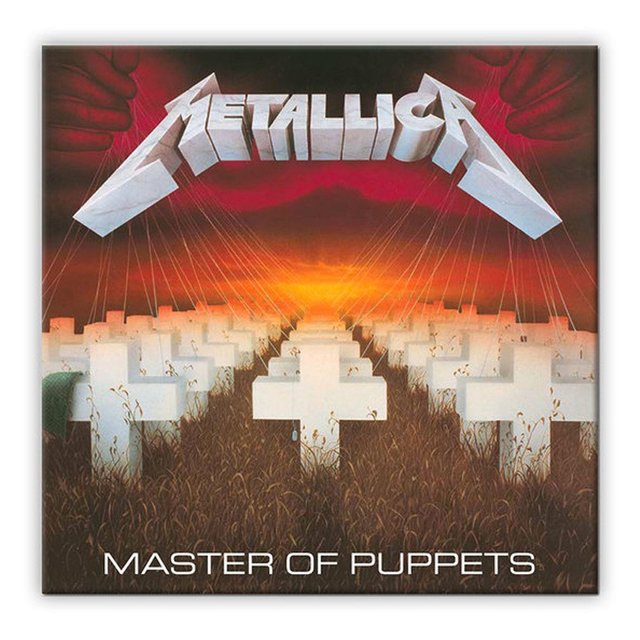Album of the Week: Metallica — Master of Puppets

While it would be a few more years before thrash metal truly etched itself upon the popular consciousness of music listeners, it’s definitive statement came in 1986 with Metallica’s third album, Master of Puppets. Thrash at the time was still mostly an underground genre, popular in parts of the United States and Europe, but Master of Puppets was arguably the first moment the genre became elevated to high art. Metallica was newly signed to an eight album deal with Elektra Records after the success of Ride the Lightening, and seeing an opportunity, they intentionally set out to make something that would please both critics and their fan base.
The band developed the ideas for what would become the album in a garage in El Cerrito, California. Frontman/guitarist James Hetfield and drummer Lars Ulrich, wrote a near endless number of riffs that were assembled over and over again in different variations until they resembled songs. Frequently they would decide on a topic and title in advance and then Hetfield would write the lyrics around these themes. The results of which led to very precise, exacting subject matter, running the gamut from manipulation, drugs, mental illness, Lovecraftian horror and the inhumanity of war.
The album was recorded in Copenhagen, Denmark with producer Flemming Rassmussen who had also recorded Ride the Lightening, and who was apparently the second choice to Rush singer/bassist Geddy Lee with whom the band could not coordinate a schedule. Over a three month period, with about 85% of the album already written, Metallica set about making ambitious arrangements, and a richer, tightened sound that both smacked the listener in the face with its aggressiveness and musicianship, but which has layers and layers buried beneath its impressive surface.
The title track, and most well-known song on Master of Puppets is an impressive blend of ricochet drums and pummeling guitar parts built atop a speedy structure that changes direction several times, culminating most notably in an unusual 21/32 time signature twist on every fourth bar. However, the album’s centerpiece is the towering anti-war screed ‘Disposable Heroes’ — a raw depiction of the necessity of brainwashing in getting people to inflict violence on others in war. Its drop from the machine gun riffs into the groovy “back to the front” chorus section is something to behold, and made even more impactful when the song cranks itself back up again.
The record marked the end of an era for the band. In September of 1986, while touring Europe for the album, bassist Cliff Burton was killed in a bus accident in southern Sweden. It seemed to take the band years to recover from this, as though they found a replacement in Jason Newsted (who eventually would leave citing never feeling like he was never a real member), the bass would be mixed so low on their next album, And Justice For All, that it was basically inaudible.
Metallica went on to make one more album that would approach the genius and ambition of Master of Puppets with 1991’s The Black Album. Though it would take the band to more popular heights, it can be argued it was more of a popular statement over an artistic one, and it would serve mark the end of their classic period. In spite of the bigger commercial success of The Black Album, Master of Puppets remains a definitive moment in thrash metal and one of the singular moments where the genre transcended its underground origins to reach for new heights.
(Friends, apologies for missing a week there due to life business, but I do hope to keep this up. Let me know what you think of the album in the comments!)